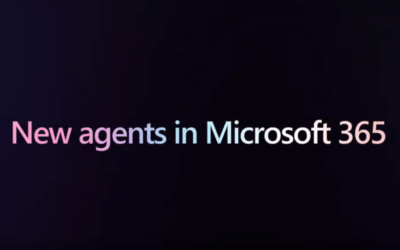MSSP vs. MDR: Which is Right for Your Business?
As cybersecurity becomes more complex, organizations are increasingly turning to third-party providers to help manage their security needs. Two popular options for outsourced cybersecurity are Managed Security Service Providers (MSSPs) and Managed Detection and Response (MDR) services. While both options can enhance an organization’s security posture, they serve different purposes and offer varying levels of support and protection.
This blog explores key aspects of cybersecurity and the differences between MSSPs and MDR to help you determine which service best fits your organization’s needs.

What is an MSSP?
An MSSP is a third-party company that provides outsourced monitoring and management of security systems and devices. MSSPs typically offer a broad range of services, including:
- Firewall management
- Intrusion detection/prevention
- Virtual private networks (VPNs)
- Vulnerability scanning
- Anti-virus and anti-malware management
- Compliance monitoring
MSSPs generally focus on the monitoring and maintenance of security technologies. They help businesses ensure that security policies and protocols are implemented, providing a certain level of protection against cyber threats. However, MSSPs primarily focus on preventive measures and monitoring, without diving deep into active threat detection and response.
What is MDR?
MDR, on the other hand, is a more specialized service that focuses heavily on actively detecting and responding to threats within an organization’s environment. MDR is often considered an evolution of traditional MSSP services, designed to address the increasing sophistication of cyberattacks.
Key features of MDR include:
- Continuous threat monitoring
- Proactive threat hunting
- Incident response
- Threat intelligence integration
- Real-time alerting and investigation
MDR providers go beyond simply managing security devices. They actively search for, identify, and respond to threats within the network, providing a much more hands-on and in-depth approach to security.
The Key Differences Between MSSPs and MDR
While both MSSPs and MDR services can provide valuable security support, their approaches are fundamentally different.
- Scope of Services
- MSSPs offer a broad range of security services, often focusing on maintaining security infrastructure, such as firewalls, antivirus software, and VPNs. They ensure that systems are properly configured and monitored but are less involved in actual threat detection and response.
- MDR providers specialize in active monitoring, detection, and response to threats. Their focus is more on identifying and responding to live threats than on managing traditional security tools and systems.
- Threat Detection Capabilities
- MSSPs primarily rely on automated tools and predefined rules to detect potential threats. While they can alert organizations when an issue arises, MSSPs often lack the ability to actively investigate and respond to incidents in real-time.
- MDR services employ advanced detection methods, including threat hunting and behavioral analysis, to identify sophisticated attacks. MDR teams typically have access to skilled analysts who can respond to security incidents swiftly and mitigate damage.
- Incident Response
- MSSPs may notify you of a potential security event but typically do not provide hands-on incident response services. You’ll likely need an internal team or a separate service to handle active threats.
- MDR providers offer a more comprehensive response, with dedicated teams available to take immediate action when a threat is detected. This might include containing the threat, mitigating damage, and providing guidance on remediation efforts.
- Proactivity
- MSSPs tend to be reactive, alerting organizations after a potential issue has been identified.
- MDR is more proactive, engaging in continuous monitoring and threat hunting to identify issues before they become full-blown incidents.
Which Should You Choose: MSSP or MDR?
The decision between an MSSP and MDR depends largely on your organization’s specific security needs and resources.
Choose MSSP if: Your organization needs assistance managing and maintaining security tools, but already has a capable internal team to handle incident response and threat detection. MSSPs are also a good fit for organizations focused on compliance, as they can help monitor and ensure adherence to various regulatory requirements.
Choose MDR if: You’re looking for a more proactive, hands-on approach to cybersecurity. MDR is ideal for organizations that want continuous monitoring, active threat detection, and immediate response capabilities but lack the internal resources to manage these aspects in-house.
Many organizations use a combination of both MSSP and MDR services to ensure full coverage across their security stack. MSSPs can handle the day-to-day management of security devices and systems, while MDR focuses on detecting and responding to the latest threats.
Conclusion
Understanding the difference between MSSPs and MDR services is critical for making informed decisions about your organization’s cybersecurity strategy. While both offer valuable services, they cater to different aspects of security management, and the right choice depends on your organization’s specific needs.
In the current threat landscape, it’s more important than ever to ensure your business is protected with a comprehensive cybersecurity strategy. Whether you choose MSSP, MDR, or a combination of both, selecting the right approach can help safeguard your organization from increasingly sophisticated cyberattacks.

Chris Hammer
Cybersecurity Solutions Architect
Chris understands that Information Security is more than 1’s and 0’s and he has over 18 years of experience in Information Security and Technology. His experience has taught him that to successfully build an information security program you must manage risk through people, process and technology.
Over his career, he has been responsible for conducting and supporting information assurance and cybersecurity for public utilities, financial services, state and local government, healthcare and software development companies.
Chris specializes in the design, implementation and assessment of secure infrastructure systems and integrated network applications for large, complex networks. He also focuses on processes, techniques and exploits that facilitate the development of tools and methodologies to enhance infrastructure assessments and red teaming activities.
Recap from Ignite’s General Session regarding Copilot and Copilot Studio
In today’s General Session on “Unlock the value of Microsoft 365 Copilot and Copilot Studio,” the focus was on Copilot Actions and Copilot Agents. Microsoft continued from where the keynote session left off yesterday, providing more details on these features and their...
Key Takeaways from Microsoft Ignite 2024 Keynote: Copilot, Security, and AI Innovations
During the Keynote of Microsoft Ignite, several announcements were made. Copilot and Security were highlighted, as over 70% of the Fortune 500 companies are now using Copilot. Some notable Copilot features include Screen Understanding, Copilot Actions, and Copilot...
Why Manufacturers Need Modern Security Solutions for Safe, Efficient Operations
In today’s industrial landscape, manufacturing environments face unique security challenges that go beyond basic surveillance. To stay competitive and safe, manufacturers must adopt advanced security solutions like alarms, cameras, access control systems, and air...


